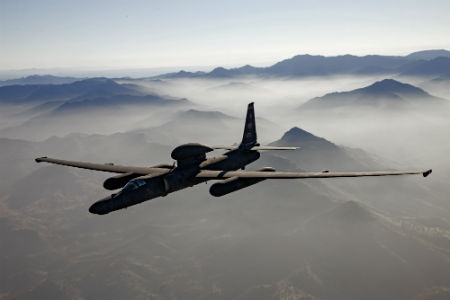 Orlando, Fla. The U-2 remains a high-demand asset in combatant commands around the world because of its flexibility and survivability, Lockheed Martin U-2 Director Melani Austin told reporters Thursday at AFA’s Air Warfare Symposium here. Austin touted U-2 mission success rates, flexibility, and potency in anti-access, area-denial environments. Earlier this year, the U-2S fleet completed a 10-band, multispectral electro-optical-infrared sensor communications gateway, Austin said. In Fiscal 2013, the U-2S had a 97.6 percent mission success rate in US Central Command; a 97.3 percent success rate in US European Command; and in US Pacific Command a 95.7 percent success rate. In addition, the U-2 is modular, and has a host of sensor suites it can fly with, from the SYERS II (multispectral) sensor to the optical bar camera and a signals intelligence suite. It also is survivable in a denied environment, emphasized Austin. Global Hawks, on the other hand, can only carry one sensor at a time, she noted. “You don’t always have access to [Global Positioning Systems] and satellites” in an A2/AD scenario, she noted, and this makes U-2S the only high-altitude system capable of accomplishing its mission in such a scenario.
Orlando, Fla. The U-2 remains a high-demand asset in combatant commands around the world because of its flexibility and survivability, Lockheed Martin U-2 Director Melani Austin told reporters Thursday at AFA’s Air Warfare Symposium here. Austin touted U-2 mission success rates, flexibility, and potency in anti-access, area-denial environments. Earlier this year, the U-2S fleet completed a 10-band, multispectral electro-optical-infrared sensor communications gateway, Austin said. In Fiscal 2013, the U-2S had a 97.6 percent mission success rate in US Central Command; a 97.3 percent success rate in US European Command; and in US Pacific Command a 95.7 percent success rate. In addition, the U-2 is modular, and has a host of sensor suites it can fly with, from the SYERS II (multispectral) sensor to the optical bar camera and a signals intelligence suite. It also is survivable in a denied environment, emphasized Austin. Global Hawks, on the other hand, can only carry one sensor at a time, she noted. “You don’t always have access to [Global Positioning Systems] and satellites” in an A2/AD scenario, she noted, and this makes U-2S the only high-altitude system capable of accomplishing its mission in such a scenario.
SDA’s Next Phase of Data Transport Satellites on Hold
June 30, 2025
The long-term future of one of the Space Development Agency’s two satellite constellations is on hold as officials study the options for replacing a planned “data transport layer” with one or more commercial solutions. President Trump’s proposed 2026 defense budget...